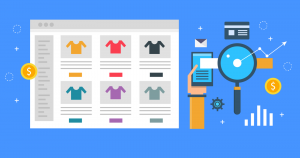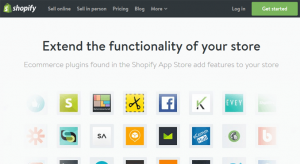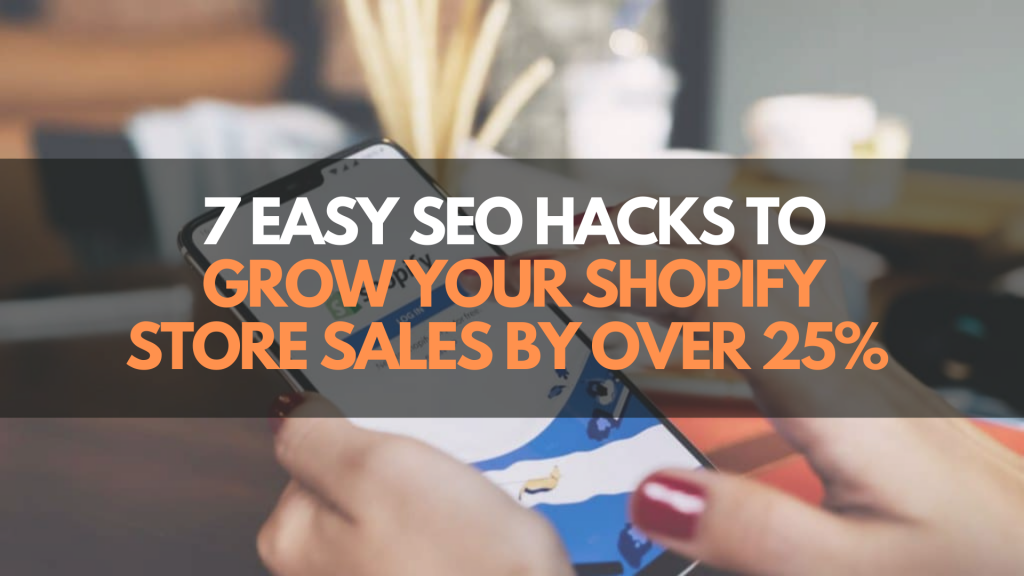Having worked as a digital agency for more than 4 years, we often come across a lot of business owners who are not familiar with digital marketing. As a result, they rely completely on agencies to give them results and remain unaware of the challenges that an agency meets in setting up the campaigns and running them.
Many businesses don’t have their own websites, and even the ones that do, tend to focus more on looks and aesthetics instead of technicalities. Post the Covid-19 pandemic, it has become imperative to have a website that is essentially an online store for your business. This is where Shopify adds value.
Shopify e-commerce website is one of the world’s most attractive solutions, with more than a million existing users. The platform has a wealth of features, comes with engaging templates and allows its users to sell goods — either physical or digital — simply online.
However, the competition in the online marketplace is fierce and is becoming significantly competitive. It has become essential for retailers to know SEO for Shopify, how to optimize Shopify store elements and various other hacks intended to promote a store’s overall performance online. If your business is lacking in sales or is not getting enough traffic then you have come to the right place. These 7 easy SEO hacks will grow your Shopify ecommerce store by 25% and help you build a successful brand.
1. Target the right keywords
To optimise your Shopify ecommerce store, start by targeting the right keywords. Keywords decide where your site appears in search results. You need to optimize your site for relevant key terms to appear in the appropriate search results and drive interesting traffic.
Here is how you can optimize your Shopify ecommerce store for relevant keywords:
Conduct keyword research: Keyword research typically involves finding out the phrases that people are entering into search engines to search for products/content like yours and the volume of searches for each keyword. You can use keyword research tools like KeywordsFX, Ahrefs, SEMrush or Long Tail Pro to help you find the right terms for your Shopify store.
Concentrate on long-tail keywords: Long-tail keywords contain three or more words. These keywords are more suitable for your site because they are more particular. This enables you to know the user’s search intent and see that they are interested in your products.

2. Optimize product pages
When you’re optimizing your Shopify e-commerce website, remember to optimize your product pages as they are the centre of your e-commerce store. Produce high-quality product pages that notify your audience and make them feel confident about choosing your products.
Here is how you can optimize your product pages:
Add high-quality images: Your audience uses your images to decide if your product is a suitable fit for them. Your images should have a high resolution and showcase your product from all angles. You can also include an Alt tag (with keywords) to all the images on the site.
Provide important details in product descriptions: Give your audience all the knowledge they need about your product in the product description. You can talk about the product elements and chief characteristics to explain how your product suits their needs or provides a solution to their problems.
Feature a clear call-to-action: If you want customers to buy your product/services then you need to tell them to buy. That is why it is vital to have a clear CTA that tells customers what their next step should be. Instead of fancy CTA’s, be direct with phrases such as “add to cart” or “buy now.” Highlight your CTA button in a different colour to make it visible on the product page. Popular brands use prominent CTAs on their e-commerce product pages. Some of them also allow customers to mark the items they like as a favourite.
Add customer reviews: Product reviews and ratings create trust, and that trust results in conversions. Customer reviews can clear any concerns that a potential consumer might have about a product and help them make a buying decision. Customers often check what past buyers have to say about a product as this helps them analyze the product and make a decision. Thus it is essential to put social proof such as reviews and ratings on your e-commerce product pages.
Upsell and cross-sell relevant products: Although an e-commerce product page should concentrate on selling that product, you shouldn’t miss out on the chance to promote other products. Add recommendations for relevant or similar products for your customers when they are on a product page. This can help increase engagement and also encourage customers to make more purchases. It also helps your shoppers with their shopping needs.
Many e-commerce brands use upselling and cross-selling methods to increase average order size and income. E-commerce giants like Amazon, promote relevant products from the same brand and other related products on their e-commerce product pages. They also recommend products that are often brought together to help customers buy everything they need at once.

3. Improve user experience with fast page speeds
Whether you’re optimizing your Shopify store to increase sales or generate leads, you want to concentrate on creating a better user experience. User experience is significant to keeping leads interested in your page and learning about your products. Poor user experience results in a greater bounce rate and reduces search engine rankings.
User experience can be improved with a fast page speed.
Shopify plugins are extremely helpful in creating a more practical and effective website. You can add a number of plugins to your site, from ones that enhance your shopping cart to ones that assist you in shipping products more effectively. Shopify offers around 4000 different plugins in the app store which is good news for store owners as they can automate a number of tasks on a daily basis. A few examples of Shopify plugins are:
–Nudgify: It adds engaging notifications, called “Nudges”, to principal pages on your website. Using live data like your stock levels and recently sold items, Nudgify can engage your customers with real-time knowledge, bringing life to your store.
–Free Shipping Bar: Customers want free shipping whenever they place a large order. In fact, one of the main reasons for any store’s cart abandonment rate is its shipping policy. By keeping a working score of your consumers’ orders and calculating the total required for free shipping, this plugin will help in reducing basket abandonment quickly.
–Product Filter and Search: This plugin makes it simpler for customers to find what they are looking for. It enables the setting up of filters within product collections, so customers can either browse by category or enter a search term. This reduces friction on the website, an important part of running any successful business.
However, adding too many Shopify plugins can slow down your site so be mindful of how many you add. Something as mere as a page taking a few extra seconds to load can result in a loss of sales. Google recommended page load time is under two seconds so try to enhance your sites’ load time and remove any unnecessary apps from your Shopify store. More page speed improvement tips are Decreasing redirects, Reducing image sizes, Leveraging browser caching, Minifying JavaScript and Minifying CSS.

Pro tip: Focus on mobile user experience as 80% of users tend to visit an e-commerce site from their mobile device. Thus, the mobile user experience must be seamless.
4. Invest in content marketing
Content plays a significant role in optimising your Shopify e-commerce store if you want to grow sales and increase profits. Content marketing helps you increase traffic on your site, keeps leads occupied on your site longer, and builds brand recognition to push more sales. Content creation helps you share your knowledge and expertise with your audience. They see you as a specialist in your industry and feel more certain about choosing your business.
To create content, you need to recognise topics to cover. Your ideas should be related to your industry to guarantee you’re directing traffic to your page that is interested in your business. You can find topics by perusing Google to see what’s there currently, using tools like Google Trends and searching for keywords related to your business. Once you have a topic you can use various formats like blogs, videos, ebooks etc.
Creating various content types will improve your SEO for Shopify because you’ll draw in more people and diverse audiences within your target market to your site. Make sure to use appropriate keywords in your content to rank in the right search results.

Check this Brand Marketing Case Study for XS Worldwide to see how the right content marketing can help a brand grow.
5. Add visual elements to increase engagement
Visuals play an important part in the user experience when it comes to shopping online. They are relevant to your site because they help divide the text and give points of engagement. Users can’t see the products in their physical form, so they depend on images and videos to help them get an idea of the product.
Ensure that all your visuals are high-quality. Low-quality images/videos that are blurry or pixelated will drive traffic away from your site as the quality of your visuals affects people’s opinions about your product’s quality. The visuals should showcase every feature of your product and give the viewer better insight into the product which will lead to more conversions.
Adding visuals will also keep your audience interested in the page to increase the time they stay on the page and, consequently, your website’s rankings in search results will improve.
6. Send cart abandonment details
Decreasing cart abandonment rates is an essential task for a boost in online sales. There are multiple reasons for consumers to abandon their carts. Roughly 70 per cent of users leave the items in the cart before converting so retailers must know how to draw them back in successfully. One of the best ways to get them back on-site to make a purchase is with abandoned cart emails. Cart abandonment statistics show that 45 per cent of users open cart abandonment emails, 21 per cent of opened emails create a click-through and 50 per cent of those who clicked through actually complete a purchase.

Explore Modifyed Digital’s Email Marketing Services and escalate your business growth.
7. Reduce Risk of Purchase
As a store owner, the best way to increase sales is to reduce the potential risk for your newest customers. How can you do this? By offering
As a store owner, the best way to increase sales is to reduce the potential risk for your newest customers. How can you do this? By offering low-cost offers, trials, money-back guarantees, and other “tripwires”. Working on the principle of getting a foot in the door, these low hanging fruits make it convenient and easy for a new user to first try, with a small purchase, at relatively low risk. And if they like your product, buy the whole package.
Examples – Mcdonalds Mc Aloo Tikki burger for Rs. 50 – > which leads to customer buying a happy meal combo for Rs. 150 or free food samples in supermarkets, which leads to you buying the full bottle.
To Conclude
While all of this is easier said than done, it is the standard in today’s digital time. Optimizing a Shopify e-commerce store is a constant pursuit but it ensures long term success for your business. With these hacks, you can increase sales, generate more profit and also build a successful brand image. While there is a lot more that can be done to optimise your e-commerce store, these hacks are a great place to start and will definitely make a difference in the performance of your Shopify store.
If your company is having difficulty reaching the next level of performance optimization, reach out to us at Modifyed Digital: Digital Marketing Company in Delhi India, and we can help get you over the slump.






